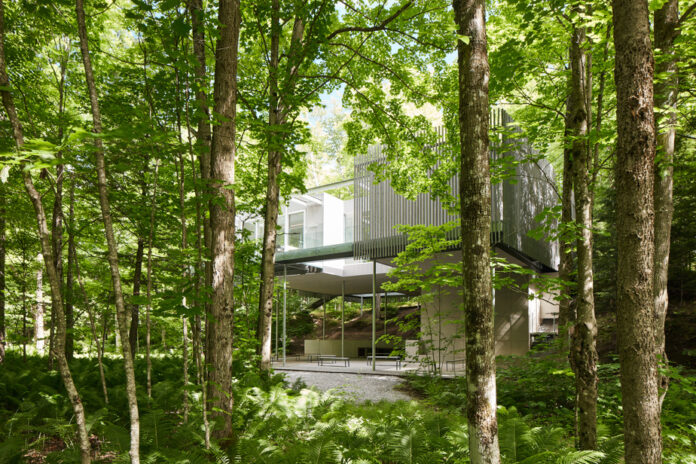The Grantham Foundation launched its first call for projects for visual arts residencies in 2019. Since then, a dozen artists have resided and created in the magnificent environment of the Foundation, in Saint-Edmond-de-Grantham, near Drummondville. . Notably Marilou Lemmens/Richard Ibghy, Andreas Rutkauskas, Anahita Norouzi and Clément de Gaulejac.
Last fall, the organization founded by art collectors Michel Paradis and Bernard Landriault launched a first call for projects for an architecture residency grant related to environmental issues. Aside from those at the Canadian Center for Architecture, residencies in architecture are rare in Canada and around the world. With this new program – financially supported by the architecture studio of Pierre Thibault -, the Foundation wants to promote and democratize architectural thinking “to inhabit the Earth differently”.
“When it is deeply rooted in society and in the territory and is based on understanding and respect for biological and cultural diversity, architecture has the potential to become a vector of change that can transcend the interests personal and economic and allow everyone to better inhabit the Earth, says Bernard Landriault. The architecture residency program aims to explore this potential and to support forward-looking thinking in order to promote architecture that is sensitive to places and to everything that lives in these places. »
The winners of the first architecture scholarship, Sébastien Roy and Jérémie Dussault-Lefebvre, are young architects from Quebec who already enjoy an international reputation. Their residency will take place at the Foundation from August 1 to 22. Having studied at UQAM and the University of British Columbia, they have built up their experience abroad (Berlin, Milan, Brussels, Malta, Porto, Nairobi) and oriented their practice by favoring architectural projects of rehabilitation and renovation, “to find the new in the old”.
The two winners work on projects that have as a common denominator “the latent interest of our relationship to what already exists” and the means to preserve the qualities of the past while responding to the current context. They believe that given the environmental context, the reuse of elements offers a resource saving potential that allows “to imagine a future without compromising it”.
“Although still marginal and often archetypal, this way of practicing architecture must be normalized, trivialized, made accessible, they say. It is simply a question of caring for and valuing what already surrounds us, in an uninhibited, sincere way, freed from immobilizing forms of conservation in favor of paradigm shifts. »
According to them, it is not for architecture to adapt, but for architects, clients, supply and demand, policies, standards and building codes. “It’s up to philosophers, sociologists, urban planners, to name just three [to adapt],” they say. It is our ways of seeing, of thinking, of our desires. That these considerations find echo within an institution such as the Grantham Foundation is a valuable recognition and support both for our approach and for the ambition of a collective reflection. »
Led by Josianne Poirier, artistic director of the Grantham Foundation, the jury that chose the two architects was made up of Anne Cormier, professor at the School of Architecture at the Université de Montréal and co-founder of Atelier Big City, Albert Ferré, Associate Director of Publications at the Canadian Center for Architecture, Peter Soland, co-founder of the firm Civiliti and visiting professor at the UNESCO Chair in Urban Landscape, and architect Pierre Thibault.





